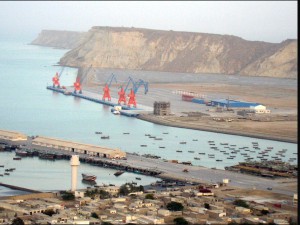“Behind China’s $1 Trillion Plan to Shake Up the Economic Order,” (New York Times, May 13, 2017) profiles China’s massive infrastructure spending across Asia, Africa, and parts of Europe. China’s government has funded vast infrastructure projects across China extending now beyond its borders into Laos, Myanmar, Vietnam, Indonesia and beyond:
Chinese money is building power plants in Pakistan to address chronic electricity shortages, part of an expected $46 billion worth of investment.
Chinese planners are mapping out train lines from Budapest to Belgrade, Serbia, providing another artery for Chinese goods flowing into Europe through a Chinese-owned port in Greece.
The massive infrastructure projects, along with hundreds of others across Asia, Africa and Europe, form the backbone of China’s ambitious economic and geopolitical agenda… creating new markets for the country’s construction companies and exporting its model of state-led development in a quest to create deep economic connections and strong diplomatic relationships.
Whether these infrastructure investments become profitable and improve trade relationships, or languish unfinished and underused, will be revealed in the coming years and decades. Both governments and private firms can spend tens of billions building infrastructure but in the wrong place, the wrong way, or at the wrong time.
The privately-financed tunnel under the English Channel has been a success for users but not for investors. “Channel tunnel’s 20th birthday holds lesson on big projects,”(Financial Times, May 5, 2014):
As an ambitious engineering project with a price tag of billions that ran into complex difficulties, the Channel tunnel may hold lessons in the debate over the merits of other complex and expensive infrastructure projects in the making. …
“It’s a wonderful thing from which we’ve all benefited, apart from the people who paid for it to be built who lost substantially all their money,” said Douglas McNeill, investment director and analyst at Charles Stanley.
“It’s a salutary reminder of the dangers of over-optimism when it comes to major infrastructure projects.”
China’s new infrastructure spending may help the hundreds of millions still impoverished in Laos, Pakistan, and nearby countries prosper from new roads, rail lines, and ports connecting them to the world economy. Or these investments may turn out to be over-optimistic or poorly conceived and designed, as many argue government-funded infrastructure has been within China over the last decade. “Why China keeps throwing trillions in investments down the drain,” (Fortune, December 1, 2014) reports:
The delivery rate of completed capital projects, which was 74-79% in the late 1990s, has now fallen below 60%. This implies that nearly 40% of Chinese investment projects are either not finished on time or not completed at all.
The even more alarming figure, which made headlines around the world, is that ineffective investment has cost China $10.8 trillion since 1997. Sixty-two percent of the wasteful investment—$6.8 trillion—was made after 2009, when China went on an investment binge to stimulate its economy.
How much spending by Chinese central and provincial government banks building factories, housing, and infrastructure inside China over the last decade has been for good and how much poor investments? Only time will tell. Much depends upon returns earned from factories, housing, office buildings, railways, dams, coal, solar, wind power installations, ports and airports, and highways.
The next trillion dollars spent building transportation infrastructure across Asia, Africa and Europe will face similar market tests, as revenue generated may or may not pay for the cost of design and construction.

